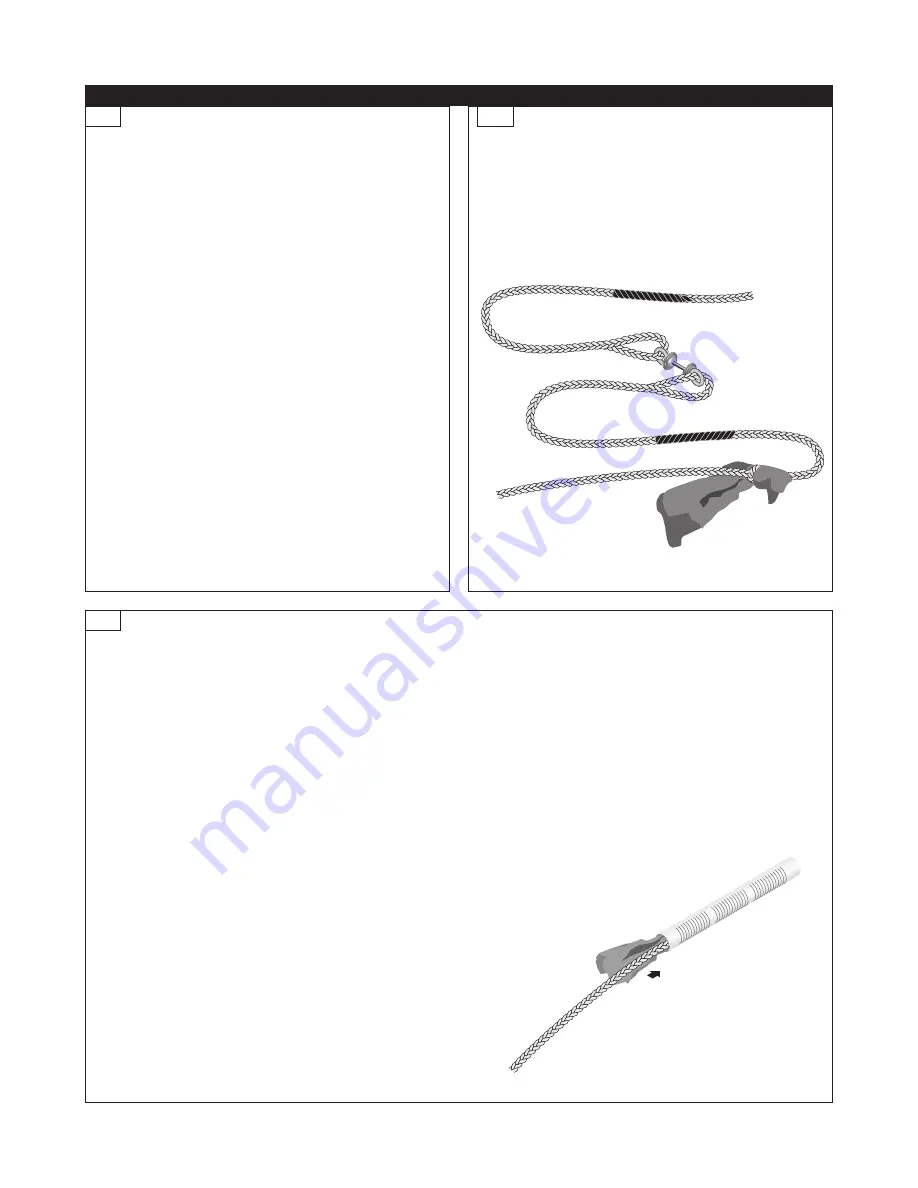
2 | nVent.com
1
2B
2A
Prepare the conduit and pull rope.
• Verify that major construction is complete.
• Verify conduit and pull rope has been installed
properly. Reference TraceTek document
H58175 for general information.
Note that conduit dimensions and related parts can vary
between projects.
• Verify that the pull rope is free of knots and splices
and that there is 6 feet of extra rope at both ends of
each section.
• Two people are needed to manage the pull rope. One
person is on each end of the end pull rope, and each
person must be able to communicate with the other in
case of problems during the pull.
• The person feeding the pull rope into conduit needs to
maintain slack at all times.
• Pull the sizing tool from one end of the conduit
section to the other.
• Verify that the sizing tool pulls freely through
each section of conduit. Pull with a slow steady
motion. Do not use excessive force on the pull
rope, as this could damage the conduit.
• As you pull, coil the pull rope by hand and keep the
pull rope out of the dirt by placing it on cardboard or
plastic sheeting.
• If the pull rope becomes stuck, do not increase
pull force-instead pull the rope in opposite
direction for a short distance, then try repulling
in original direction with normal force.
• Shake the rag attached to the sizing tool free of excess
debris. Remove the rope section containing the rag
from the sizing tool. Replace the rag with a clean rag if
necessary, and then attach the rope section with the rag to
the eye splice in advance of the sizing tool.
• Reverse the pulling direction to bring the sizing tool
through the conduit in the opposite direction, and return the
original pull rope back into the conduit. Remove the sizing
tool and rope section with rag from the pull rope.
• Verify conduit ends are marked for example, with different
color conduit endcaps or tape to indicate direction
(towards or away) relative to TraceTek alarm module.
• Arrange excess pull rope by coiling around the riser pipe
and taping in place.
• Cover conduit ends to maintain cleanliness within conduit.
Use a plastic bag taped in place, or stuff a clean rag into
conduit end.
Conduit Cleaning:
• Even if the conduit was proofed with a conduit cleaning
tool during the conduit installation process, it is
recommended to clean and check clearance of the
conduit immediately before installing cable in order to
avoid damaging the cable.
• Attach a rope section with a rag tied to the eye splice in
advance of the sizing tool.
Installation




























